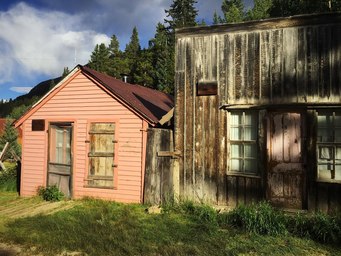
St. Elmo was first named Forest City but was later changed because of a California town with the same name. The name St. Elmo was chosen by Griffith Evans, one of the founding fathers, who was at the time reading the novel "St. Elmo".
At its peak in the 1890s, the town boasted a general store, telegraph office, town hall, Over 5 hotels, a handful of saloons, dancing halls, a newspaper office, and a schoolhouse. The Denver, South Park and Pacific Railroad line ran through St. Elmo (Yes, it's the same South Park you are thinking of). There were 150 mines claimed within St. Elmo. The majority of the folks who lived in St. Elmo worked at the Mary Murphy, Teresa C., The Molly or the Pioneer Mines. The Mary Murphy Mine was the biggest and most productive mine in the area. While in operation, the Mary Murphy Mine recovered over $60,000,000 worth of gold. While the other local mines shut down, the Mary Murphy Mine continued to operate until the "gold standard" was implemented. Which collapsed the price of silver overnight. As a result. The Railroad was closed and eventually abandoned in 1922. Even after the world gave up on this town and its mines, people continued to harvest ore. This was done by hand and miners would haul individual mining carts down the mountain. Once the mining industry closed completely, St. Elmo drastically declined. Miners searched elsewhere for gold, rather than silver. The business district in St. Elmo closed down as well. Few people continued to live in the town. Postal service was discontinued in 1952 after the death of St. Elmo's postmaster. The current population is...three. Enjoy a few photos from our 2017 exploration:
2 Comments
|
AuthorThank you for visiting! This is a collection of media from the lost and abandoned corners of the world. Please have a look around, I hope you enjoy. Archives
April 2022
Categories
All
|
Libraries |
Support |
|


